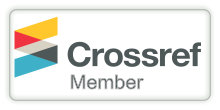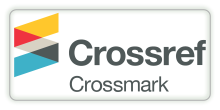DECODING THE SUCCESS OF INDIA’S FIRST AI NEWS ANCHOR LISA: A STUDY OF VIEWERSHIP AND AUDIENCE ENGAGEMENT ON OTV’S ENGLISH YOUTUBE CHANNEL
DOI:
https://doi.org/10.29121/shodhkosh.v6.i1.2025.4409Keywords:
AI Anchor, LISA, News Delivery, OTV, Content Effectiveness, Regional News MediaAbstract [English]
The integration of Artificial Intelligence (AI) in the field of journalism and mass media has given rise to the advent of AI anchors, the personalities designed by advance computer technology for news delivery. Odisha Television Network (OTV) introduced AI anchor LISA in 13th July 2023, India’s first AI news anchor in the Odia language, making remarkable landmark in the evolution of journalism. This research aims to examine LISA’s performance on OTV’s YouTube channel of English by analysing viewership’s trends, audience engagement to particular content and content effectiveness. The paper focuses on understanding the factors and causes contributing to the decline of viewership of AI anchor LISA’s presented news YouTube videos. By analysing viewership data of YouTube videos, the study identifies trends and patterns that reflect a decrease in audience engagement over time. The paper also tries to explore the effectiveness of LISA’s content in terms of viewer retention, interaction and satisfaction. The study employs a mixed-methods approach, combining quantitative analysis of viewership data with qualitative feedback from viewers. Surveys and focus group discussion are done to gather insights into audience perceptions and preferences about LISA’s AI integrated news delivery. The findings reveal that several key factors affecting viewership, including the novelty effect (This indicates that people get very excited and interested in new things when they are initially introduced but gradually its effect decreases) wearing off, competition from traditional anchors, and potential issues with content relevance and presentation style.
References
Aggrawal, N., & Arora, A. (2019). Behaviour of viewers: YouTube videos viewership analysis. International Journal of Business Innovation and Research DOI: https://doi.org/10.1504/IJBIR.2019.101692
Ashfaq, R., Nabi, Z., & Rohit. (2022). Artificial Intelligence and the Indian Media Industry: the Future is Now. Journal of Artificial Intelligence, Machine Learning and Neural Network, 26, 24–31. Retrieved from https://doi.org/10.55529/jaimlnn.26.24.31 DOI: https://doi.org/10.55529/jaimlnn.26.24.31
Bahroun, Z., Anane, C., Ahmed, V., & Zacca, A. (2023). Transforming Education: A Comprehensive Review of Generative Artificial Intelligence in Educational Settings through Bibliometric and Content Analysis. Sustainability (Switzerland), 15, Article 12983. Retrieved from https://doi.org/10.3390/su151712983 DOI: https://doi.org/10.3390/su151712983
Biswal, S. K., & Gouda, N. K. (2019). Artificial intelligence in journalism: a boon or bane? In Algorithms for intelligent systems (pp. 155–167). Retrieved from https://doi.org/10.1007/978-981-15-0994-0_10 DOI: https://doi.org/10.1007/978-981-15-0994-0_10
Crevier, D. (1993). AI: the tumultuous history of the search for artificial intelligence. Basic Books, Inc.
Corinna Underwood’s news article in 2019 at emerj. Retrieved from https://dx.doi.org/10.29121/shodhkosh.v5.i3.2024.4409 DOI: https://doi.org/10.29121/shodhkosh.v5.i3.2024.4409
Dörr, K., & Hollnbuchner, K. (2016b). Ethical challenges of Algorithmic journalism. Digital Journalism, 5(4), 404–419. Retrieved from https://doi.org/10.1080/21670811.2016.1167612 DOI: https://doi.org/10.1080/21670811.2016.1167612
Feng, Y., & Xie, Q. (2018). Demystifying Novelty Effects: An Analysis of Consumer Responses to YouTube Videos Featuring Augmented Reality Out-of-Home Advertising Campaigns. Journal of Current Issues & Research in Advertising, 40, 36 – 53. DOI: https://doi.org/10.1080/10641734.2018.1500321
Fitzpatrick, R., Newman, S., Revenson, T., Skevington, S., & Williams, G. (1995). Understanding Rheumatoid Arthritis (1st ed.). Routledge. Retrieved from https://doi.org/10.4324/9780203993910 DOI: https://doi.org/10.4324/9780203993910
Flew, T. (2020). Globalization and post-globalization. In Routledge handbook of digital media and communication (pp. 350-362). Routledge. DOI: https://doi.org/10.4324/9781315616551-30
Gajanayake, G.M.H.C. and Thanuja Chandani Sandanayake. “Trending Pattern Identification of YouTube Gaming Channels Using Sentiment Analysis.” 2020 20th International Conference on Advances in ICT for Emerging Regions (ICTer) (2020): 149-154. DOI: https://doi.org/10.1109/ICTer51097.2020.9325476
Globus Journal. (2024). Evolution of Artificial Intelligence in the Media Industry: Transformations and Future Prospects. Retrieved from https://globusjournal.com/evolution-of-artificial-intelligence-in-the-media-industry-transformations-and-future-prospects/
Kurihara, K., Seiyama, N., Kumano, T., Fukaya, T., Saito, K., & Suzuki, S. (2021). “AI News Anchor” with Deep Learning-Based Speech Synthesis. SMPTE Motion Imaging Journal, 130(3), 19–27. Retrieved from https://doi.org/10.5594/jmi.2021.3057703 DOI: https://doi.org/10.5594/JMI.2021.3057703
Leon-Carrion, J., & Giannini, M. (Eds.). (2001). Behavioral Neurology in the Elderly (1st ed.). CRC Press. Retrieved from https://doi.org/10.1201/b14249 DOI: https://doi.org/10.1201/b14249
LeCun, Y., Bengio, Y., & Hinton, G. (2015). Deep learning. Nature, 521(7553), 436-444. Retrieved from https://www.cs.toronto.edu/~hinton/absps/NatureDeepReview.pdf DOI: https://doi.org/10.1038/nature14539
Lee, Y., & O'Connor, G.C. (2003). The Impact of Communication Strategy on Launching New Products: The Moderating Role of Product Innovativeness. Journal of Product Innovation Management, 20, 4-21 DOI: https://doi.org/10.1111/1540-5885.t01-1-201002
Li, L. (2025) Impact of AI Virtual Anchors on Traditional News Anchors. International Journal of Knowledge Management (IJKM), 21(1), 1-17. https://doi.org/10.4018/IJKM.362624 DOI: https://doi.org/10.4018/IJKM.362624
Li, Z., Peng, Z., Zhang, Z., Chu, Y., Xu, C., Yao, S., ... & Ma, J. (2023). Exploring modern bathymetry: A comprehensive review of data acquisition devices, model accuracy, and interpolation techniques for enhanced underwater mapping. Frontiers in Marine Science, 10, 1178845. DOI: https://doi.org/10.3389/fmars.2023.1178845
Lupșa-Tătaru, D. A., & Lixăndroiu, R. (2022). YouTube channels, subscribers, uploads and views: a multidimensional analysis of the first 1700 channels from july 2022. Sustainability, 14(20), 13112. DOI: https://doi.org/10.3390/su142013112
McCarthy, J., Minsky, M. L., Rochester, N., & Shannon, C. E. (2006). A proposal for the dartmouth summer research project on artificial intelligence, august 31, 1955. AI magazine, 27(4), 12-12.
Mitchell, T. M., & Mitchell, T. M. (1997). Machine learning (Vol. 1, No. 9). New York: McGraw-hill.
Munoriyarwa, A., Chiumbu, S., & Motsaathebe, G. (2021). Artificial Intelligence Practices in Everyday News Production: The Case of South Africa’s Mainstream Newsrooms. Journalism Practice, 17(7), 1374–1392. https://doi.org/10.1080/17512786.2021.1984976 DOI: https://doi.org/10.1080/17512786.2021.1984976
Noain-Sánchez, A. (2022). Addressing the Impact of Artificial Intelligence on Journalism: the perception of experts, journalists and academics. Communication & Society, 35(3), 105–121. Retrieved from https://doi.org/10.15581/003.35.3.105-121 DOI: https://doi.org/10.15581/003.35.3.105-121
Nourani, M., Roy, C., Block, J.E., Honeycutt, D.R., Rahman, T., Ragan, E.D., & Gogate, V. (2021). Anchoring Bias Affects Mental Model Formation and User Reliance in Explainable AI Systems. Proceedings of the 26th International Conference on Intelligent User Interfaces. DOI: https://doi.org/10.1145/3397481.3450639
Omlor, A. J., Schwärzel, L. S., Bewarder, M., Casper, M., Damm, E., Danziger, G., … Lepper, P. M. (2022). Comparison of immersive and non-immersive virtual reality videos as substitute for in-hospital teaching during coronavirus lockdown: a survey with graduate medical students in Germany. Medical Education Online, 27(1). Retrieved from https://doi.org/10.1080/10872981.2022.2101417 DOI: https://doi.org/10.1080/10872981.2022.2101417
OTV English news Chanel LISA ai anchor play. Retrieved from list.https://youtube.com/playlist?list=PLJqGhMp9dhmnUzKCO2V1aYjbWeMgPYt4K&si=FyWgXQnTjkpy2yNQ
Press Trust India news article. Retrieved from https://www.ptinews.com/news/east/604842.html
Press Conference of OTV. Retrieved from https://www.youtube.com/watch?v=QoY27D1XZC4
Russell, S., & Norvig, P. (2016). Artificial Intelligence: A Modern Approach (3rd ed.). Pearson Education. Retrieved from http://aima.cs.berkeley.edu/index.html
Saurabh, S., & Gautam, S. (2019). Modelling and statistical analysis of YouTube's educational videos: A channel Owner's perspective. Comput. Educ., 128, 145-158. DOI: https://doi.org/10.1016/j.compedu.2018.09.003
The Day After AI News. (2025). 2025 Media Landscape Transformed by AI: An Era of Algorithms and Personalization. Retrieved from https://thedayafterai.squarespace.com/featured/2025-media-landscape-transformed-by-ai-an-era-of-algorithms-and-personalization
Wells, J.D., Campbell, D.E., Valacich, J.S., & Featherman, M. (2010). The Effect of Perceived Novelty on the Adoption of Information Technology Innovations: A Risk/Reward Perspective. Decis. Sci., 41, 813-843. DOI: https://doi.org/10.1111/j.1540-5915.2010.00292.x
Xinhuanet article in 2018. Retrieved from World's first AI news anchor makes "his" China debut - Xinhua | English.news.cn
Yu, Y., & Huang, K. C. (2021). Friend or foe? Human journalists’ perspectives on artificial intelligence in Chinese media outlets. Chinese Journal of Communication, 14(4), 409–429. Retrieved from https://doi.org/10.1080/17544750.2021.1915832 DOI: https://doi.org/10.1080/17544750.2021.1915832
Xue, K., Li, Yifei., & Jin, Hanqing. (2022): What Do You Think of AI? Research on the Influence of AI News Anchor Image on Watching Intention. Behavioural Science, Retrieved from https://www.mdpi.com/2076-328X/12/11/465 DOI: https://doi.org/10.3390/bs12110465
Zhai, Y., Yan, J., Zhang, H., & Lu, W. (2020). Tracing the evolution of AI: Conceptualization of artificial intelligence in mass media discourse. Information Discovery and Delivery, 48(3), 137-149. Retrieved from https://www.emerald.com/insight/content/doi/10.1108/idd-01-2020-0007/full/html DOI: https://doi.org/10.1108/IDD-01-2020-0007
Downloads
Published
How to Cite
Issue
Section
License
Copyright (c) 2025 Jupiter Satapathy, Jayanta Kumar Panda

This work is licensed under a Creative Commons Attribution 4.0 International License.
With the licence CC-BY, authors retain the copyright, allowing anyone to download, reuse, re-print, modify, distribute, and/or copy their contribution. The work must be properly attributed to its author.
It is not necessary to ask for further permission from the author or journal board.
This journal provides immediate open access to its content on the principle that making research freely available to the public supports a greater global exchange of knowledge.































